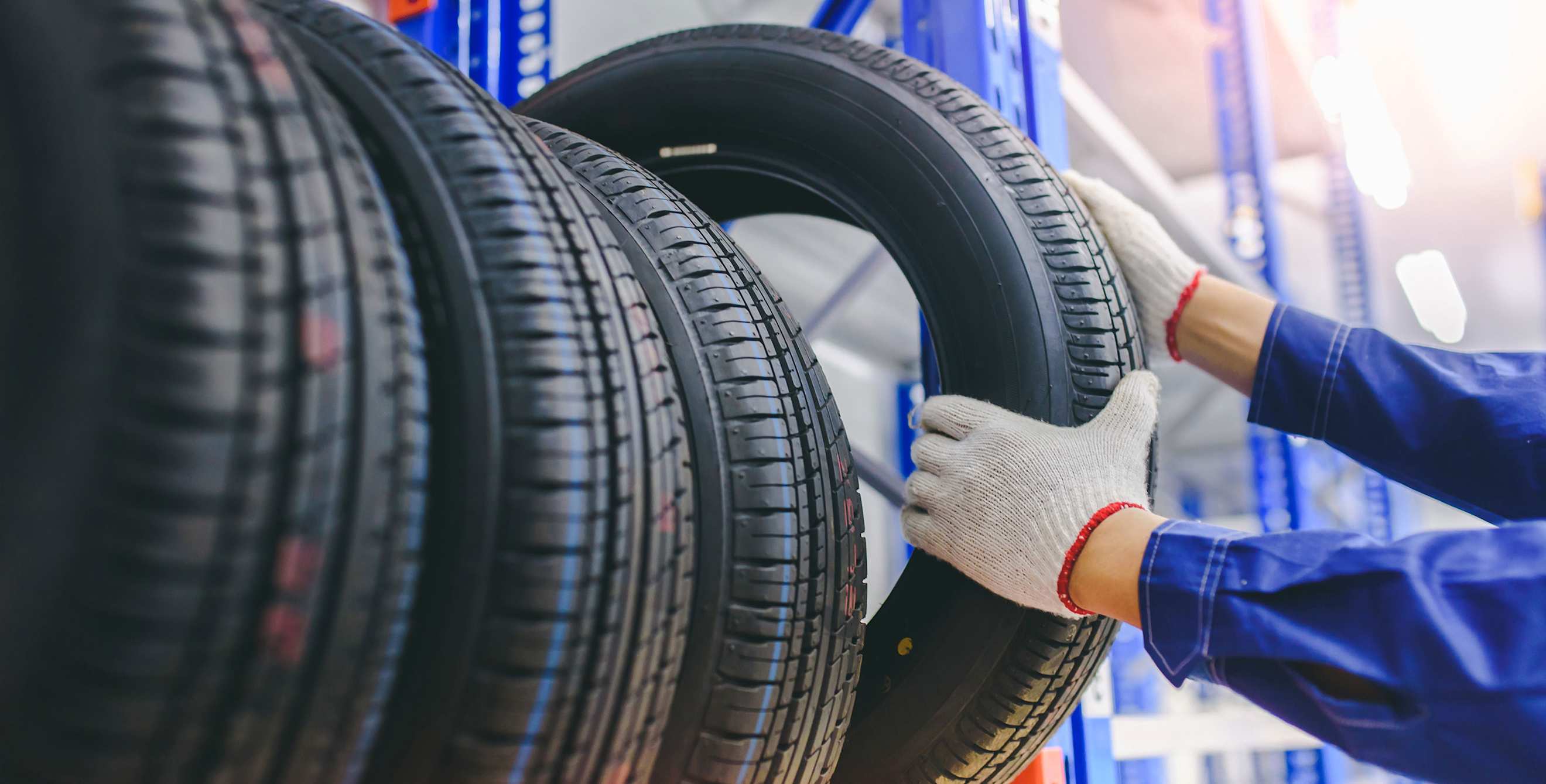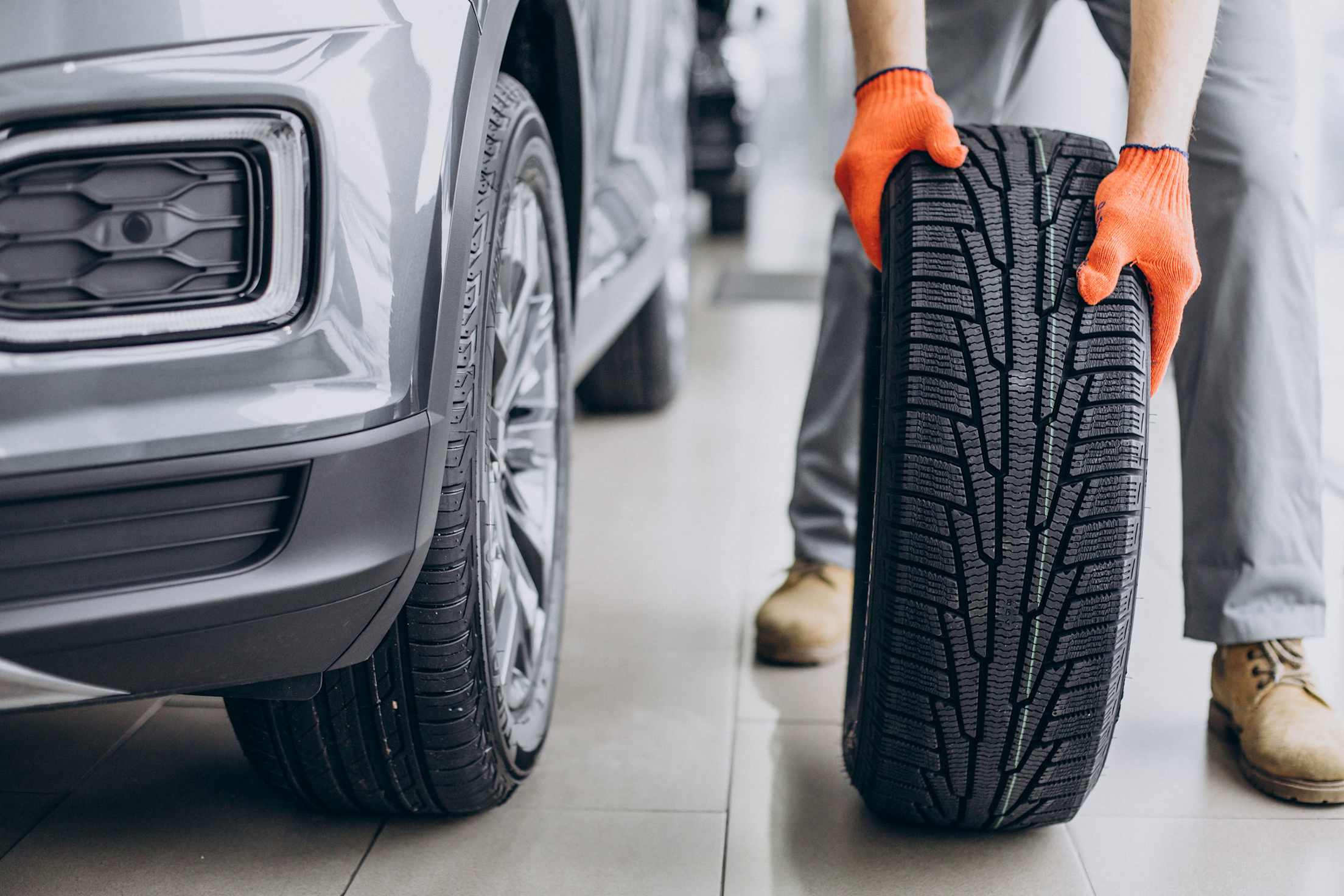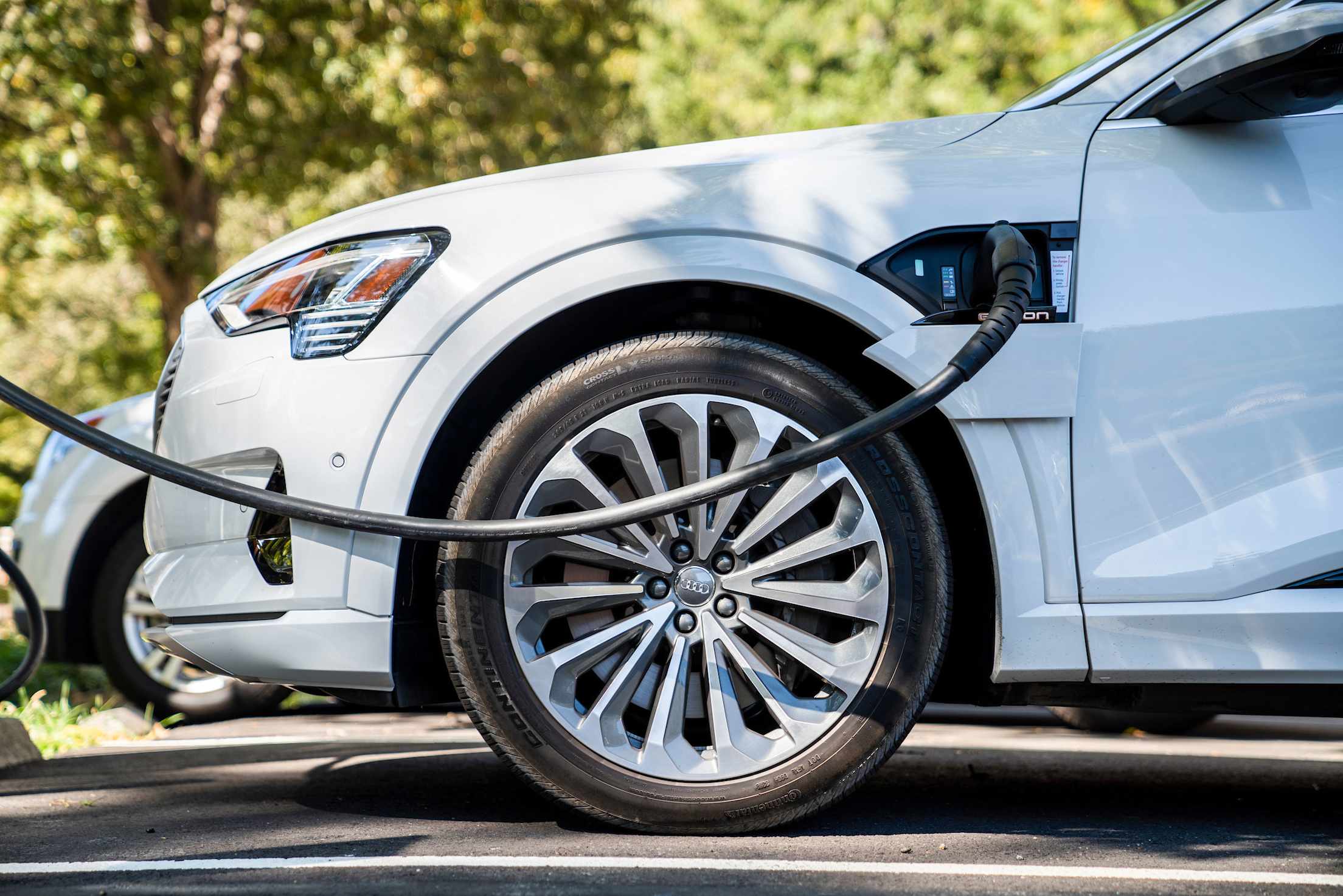
When to Replace Tires and How to Buy New Ones
Learn how to choose the best tires and save money on your purchase.

Tires are integral to your vehicle’s safety. They play a major role in stopping, maintaining control, and getting the most miles out of each gallon of fuel or charge. When your tires are in good condition, it’s all smooth driving, but knowing when they need to be replaced and buying new tires can feel complicated. Confidently make your selection with expert advice about when to replace your tires and what to look for when shopping.
When to Replace Tires
Your car’s tires may need to be replaced for a variety of reasons, but the most common is wear. A tire’s tread is what gives you traction, gripping the road and allowing you to quickly and safely bring your vehicle to a stop in the rain or snow. Most passenger car and light truck tires start with anywhere between 9/32 to 14/32 of an inch of tread. When your tire tread is worn down to around 4/32 of an inch, it’s time to start considering replacement. At 2/32, your tires are unsafe and must be replaced immediately.
Smart Tip: Measure your tire tread at home with an inexpensive tread depth gauge.
“Many of today’s tires last 50,000 miles or more before they wear out, though heat, environment, potholes, and underinflation can weaken them,” says Mike Quincy, auto content specialist at Consumer Reports.
Your tires may also need to be replaced if they are worn unevenly, have a defect, or are old. Most tire manufacturers recommend replacing tires every six to 10 years because tires become more prone to failure as they age and the materials break down. You can determine the age of a tire by looking at the DOT number on the sidewall. The last four numbers indicate the week and year when the tire was manufactured. For example, 0420 indicates the fourth week of 2020.

How to Choose the Right Type of Tire
“When it comes time to replace your tires, it pays to know what is currently on your vehicle and to learn about your options,” says Quincy. You’ll find the tire size, load rating, and speed rating—all necessary to buy the right replacement—on a sticker inside the driver’s side door jamb. No matter the tire brand or type you buy, it’s important for the tire to have the same specifications as listed on that label.
“The type of tire selected depends on its intended use,” says Travis Mock, director of Car Repair Strategy for AAA Automotive Repair Centers. “Many consumers opt for an all-season tire.” All-season tires are designed to balance traction, noise, and performance in ice, snow, and rain, but do not offer the level of traction that winter tires provide.
Winter tires are designed to remain pliable in near freezing temperatures. To help with steering and braking in rain and snow, winter tires have additional grooves in the tread to increase performance. Winter tires cannot be used year-round—they should be removed when temperatures are consistently above 40°F and replaced with tires better suited to warmer weather.
All-weather tires are a happy medium. They have many of the features of an all-season tire, but they perform better in winter weather. If you don’t want to splurge on two sets of seasonal tires but want enhanced traction in the snow, all-weather tires can be a great choice.
What to Look at When Shopping for Tires
Ultimately, choosing a tire is a balancing act between cost, safety, warranty, and other factors. “We recommend that shoppers prioritize safety factors, such as handling and dry and wet braking, and consider nice-to-have elements, such as rolling resistance and warranty coverage, the tie breakers when the time comes to make a purchase decision,” says Quincy. “Every tire type comes with some kind of compromise.”
Traction
Rated AA, A, B, or C, the traction rating of a tire is based on the tire's ability to stop on a wet road. The higher the rating (AA is the highest, C is the lowest), the faster the tire came to a stop during testing.
Treadwear
The treadwear rating indicates the speed at which a tire is likely to wear down as you drive. The higher the number, the longer the tire should last. A grade of 200 indicates that a tire should wear twice as well as a tire graded 100.
Temperature
As you drive, your tires heat up. This is exacerbated in hot weather and while driving long distances. The temperature rating, graded A, B or C, indicates how resistant the tire is to heat. Extreme heat can cause a tire to deteriorate, leading to blowouts and other tire problems.
Warranty
Manufacturers offer a treadwear warranty on most tires, but performance and winter tires generally do not come with one. In theory, this warranty is the number of miles you can expect the tires to last. If your tire doesn’t last as long as the manufacturer says it should, that doesn’t mean you’re getting a free set of tires. This warranty is prorated so you’ll get a credit for the undriven mileage.
A tire treadwear warranty does not cover damage caused by road hazards (including blowouts, nail punctures, and the like) or uneven tire wear. Additionally, your treadwear warranty can be void if you don’t properly maintain your tires by rotating them regularly and keeping them properly inflated. Your warranty claim may also be denied if the tire isn’t worn evenly across its width.
Smart Tip: If all the ratings and features are making your head spin, Consumer Reports has a tire buying tool that allows you to easily compare them.

What to Consider When Purchasing Tires for an Electric Vehicle
Because EVs are heavier than internal combustion–engine vehicles, they require tires that have higher load ranges and higher inflation pressures. The wrong set of tires can cause significant road noise or decrease range.
“We would stick with the type of tire that originally came with your vehicle—that is, the same size, load index, and speed rating,” says Quincy. Tire manufacturers are starting to produce tires specifically designed for electric vehicles, called HL (for heavy load) tires, which will offer alternatives for EV owners in the future.
How to Save Money on Tires
Start shopping for tires before they desperately need to be replaced, so you can research your options and bide your time for the best price. If you can, shop during traditional retail sales periods such as Black Friday, Cyber Monday, Memorial Day, and Labor Day, as tires typically go on sale then. And don’t forget to ask about manufacturer’s rebates, which can usually be stacked on top of coupons and sales.